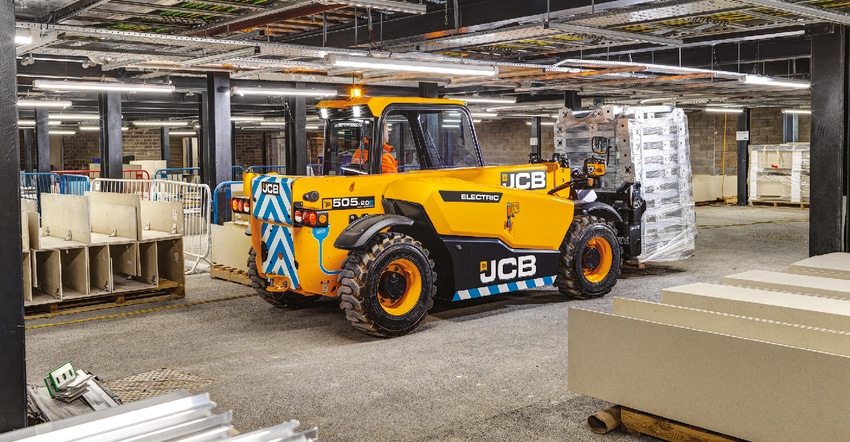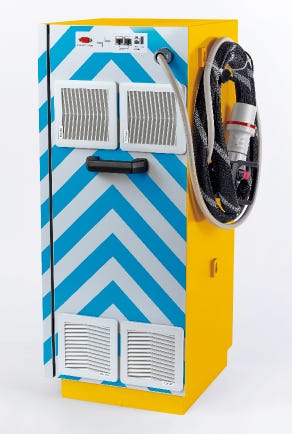December 4, 2020

The talk of moving toward zero emissions for off-road equipment is more than that these days, and JCB is carving a new path. The company is launching a range of electric equipment in different industries, and for agriculture, the new 505-20E Loadall may get some attention. Launched in a virtual global media event in November, the telehandler features an entirely new approach to design.
The company’s program called Road to Zero aims to develop machines that work hard but don’t pollute. It’s a big challenge given the power needs for equipment and the ability of most electric systems to perform. But according to company reports, JCB is working it out: “JCB has taken a pioneering lead in the move to electric propulsion in construction, agricultural and industrial machinery, having successfully introduced the 19C-IE mini excavator and the 66-40E Teletruk to the market.”
These are specialized vehicles for construction, but the new Loadall would be handy for any horse farm, and dairy or beef operation when handling materials.
An electric approach
During the media launch, the company shared a look inside the 505-20E. And opening the hood of an electric telehandler is an eye-opener: no engine, a big lithium-ion battery and electric motors.

POWER UP: JCB’s rapid charger offers the ability to bring a machine back to full stored power in an hour.

“The electric machine is every bit as powerful and productive as today’s diesel, but they’re very different,” said Richard Brooks, engineering director for JCB. “We haven’t just electrified the diesel machine, we’ve created a brand-new, highly efficient electric Loadall.”
A look at the innards of the machine show a 96-volt lithium battery where you might normally find a diesel engine. The battery can be charged using the onboard charging system or the rapid universal charger. With that external charger, it’s possible to bring the machine back to full charge in about an hour, Brooks said. In addition, the machine uses regenerative charging during the day to extend battery life.
And that battery can be recharged 5,000 times, which Brooks noted is 10 years of use with typical duties. The design is also maintenance-free and can operate at temperatures as low as −4 degrees F to as high as 140 degrees, which covers most conditions.
A motor controller converts the 96-volt direct current to alternating current to power the 23-hp transmission motor, and the 30-hp hydraulic system motor “The motor controller manages the electric power demand from the transmissions and the hydraulic systems … balancing acceleration, deceleration and hydraulic control while transporting loads,” Brooks said.
Getting to work
The new electric 505-20E doesn’t use hydrostat, instead it uses electric motors. The 23-hp drive motor is connected using a permanent four-wheel-drive drop box and prop shaft to the front and rear JCB axles designed for increased efficiency.
As for hydraulics? That 30-hp hydraulic system motor powers a fixed displacement gear pump delivering a maximum 21-gallon-per-minute flow. Flow is proportional to joystick position, and the lift end is controlled by an electro-hydraulic lock valve block, with hydraulic regeneration on boom lower and retract.
That rapid Universal Charger is compatible with current and future E-Tech electric models from JCB, so one unit can be used to charge different machines. The charger can work with electrical systems from 48 to 96 volts and above. All JCB E-Tech machines come with built-in chargers, but this rapid charger can top them up faster.
As for electrifying other bigger machines? During the global conference, JCB management noted they’re working on future solutions, but have several options. It remains to be seen how that turns up in the company’s Fastrac tractor. For more information on the new 505-20E, visit jcb.com.
About the Author(s)
You May Also Like






